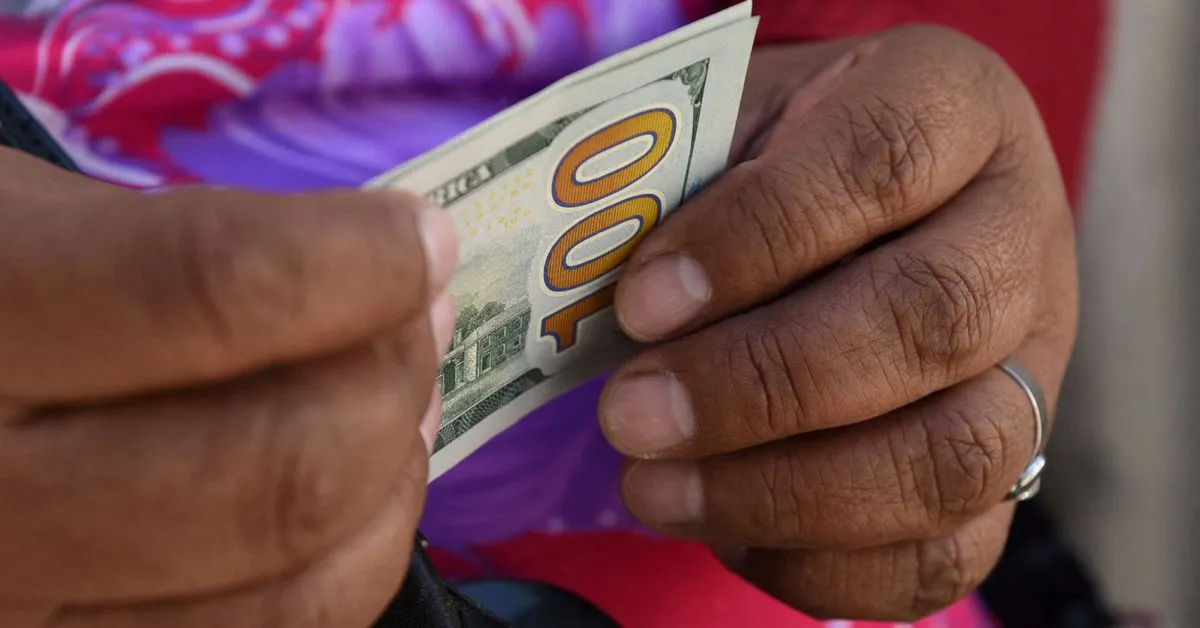LA PAZ, July 28 (Reuters) - Bolivia’s government is determined to curb dependence on the U.S. dollar for foreign trade, instead turning to the Chinese yuan, officials said, as Latin American support for alternative currencies grows.
Economy Minister Marcelo Montenegro said the Andean country was following “a pattern at the level of international trade, that is generating a progressive increase in the use of the yuan in foreign trade,” during a press conference on Thursday in La Paz.
Bolivia has faced months of severe dollar shortages, driven in part by falling natural gas production, a key national export. Net foreign currency reserves have fallen to roughly $4 billion from a peak of $15 billion in 2014, pressuring state finances and threatening Bolivia’s long-defended currency peg with the dollar.
“China has become the world’s largest exporter. And in what currency would a large exporter want to receive everything it produces? Not in dollars, but in its own currency,” Montenegro said.
Through Bolivian state-owned bank, Banco Union, importers and exporters have been able to trade in yuan since February, and the Russian rouble since March, bank officials have said.
Financial transactions worth 278 million Chinese yuan ($38.7 million) accounted for 10% of Bolivia’s foreign trade in May through July, Montenegro said.
Russia’s ambassador to Bolivia, Mikhail Ledenev, has said that the transactions between Banco Union and Russia’s Gazprombank facilitate “the work of Russian companies in the market” despite economic sanctions imposed on Moscow by Western nations since 2022.
China and Russia are stepping up investments to develop Bolivia’s huge but largely untapped lithium resources to meet growing demand for the metal used to make electric vehicle batteries.
Three lithium deals with two Chinese and one Russian firm were signed earlier this year, pledging to invest a total of $2.8 billion, which could be made partly in yuan, Montenegro said.
The Chinese currency could also be used to pay off the government’s outstanding loans from Beijing and improve trade integration among Latin American countries, the minister added. Brazil and Argentina have also made it easier to trade in yuan.
Reporting by Daniel Ramos; Writing by Lucinda Elliott; Editing by Richard Chang



Looks like Bolivia’s next in line for the Belt and Road Bait and Switch, and they’re sending out the messaging that they want a shot at what Africa’s getting.
That being said, it’s not surprising that we’d see this reaction from Bolivia and other economically distressed countries in Latin America given the interest rate increases by the Fed. This caused downstream liquidity problems that the economic minister is directly speaking to. Note, this explanation appears disingenuous, as the Boliviano has been rising against the dollar since the beginning of 2022.
Digging in a bit, it’s important to note that:
That they did this in the middle of the pandemic is actually a stronger indicator than the attached article that the Arce administration is determined move Bolivia out of the US’s economic sphere of influence. This is understandable given the abuses many countries have suffered as a result of IMF policies.
That being said, Belt and Road is a very similar deal, just without the same conditionality that the IMF requires of its debtors. I don’t see it being a better choice for Bolivia in the long run, and I would be far more worried about China and Russia gaining additional influence in my country than I would the US, but that’s only considering current geopolitics, and disregards the history and scars of US action in Latin America.
Belt and brick road. Earlier this month Bolivia was calling on other South American countries to abandon USD as part of the leadup to the BRICS summit.
I think it’s a fairly safe bet to assume it’s among the 22 countries which have applied for membership when BRICS expands, or at very least the wider 40 who are interested. There has been a bit of talk lately about BRICS maybe even adopting or creating a single reserve currency, which is going to be interesting if it happens.
IMF is nicknamed “Infant Mortality Fund” in humanitarian aid circles because even when you control for other factors an IMF loan is always accompanied by a rise in infant mortality in the country that receives it, due to the conditions it imposes.
And, Operation Condor still casts a long shadow. Many of the families of the Disappeared are still alive. With allies like that, who needs enemies.